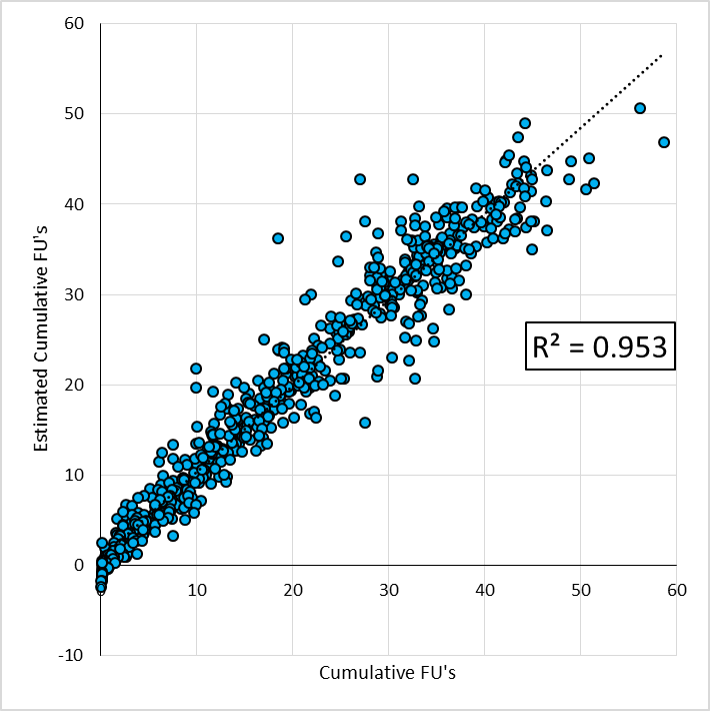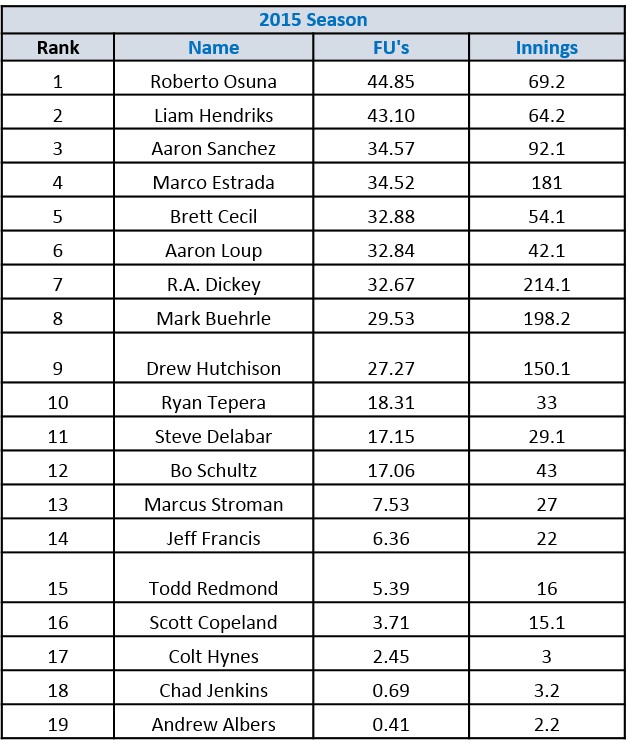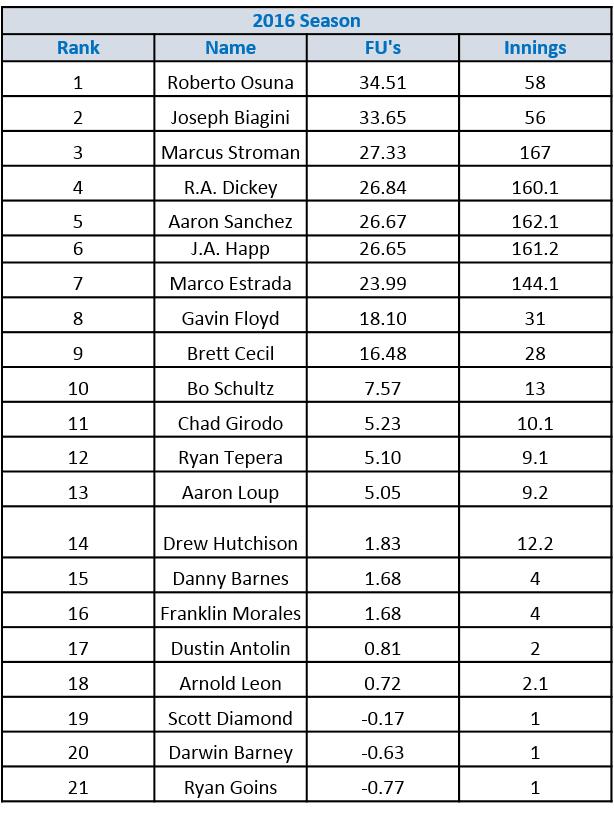To calculate individual game FU’s, you’ll have to download the pitchFx database. However, if you want to get an idea of how much fatigue a pitcher has accumulated during a season, there is an easier way.
I investigated how well Cumulative FU’s lined up with data I downloaded from FanGraphs from the 2015 season – particularly, the amount of Innings pitched, the pace of pitching, number of relief innings pitched, and total pitches thrown. Using a linear regression approach, I then figured out what the right coefficients would be to predict the cumulative FU’s. Here are the results:
Overall, the R2 value was 0.95, and the RMS error was 3.0 Cumulative FU’s. Not too bad. Looking a bit more specifically, relief innings pitched was the most significant individual predictor, at R2 = 0.43. The combined variables produce the most accurate replication of the Cumulative FU metric.
If you want to use this to estimate workload in pitchers, the formula is: Cumulative FU’s =-3.38 + 0.10 * IP + 0.43 * Relief IP + 0.12 * Pace + 0.004 * Pitches.
With all of this in mind – now, let’s take a look at some 2016 data.
I went on the FanGraphs site, and generated a custom report with IP, Pitches, Relief IP, and Pace included.
Once again, the list ends up being fairly reliever heavy. Erasmo Ramirez has the highest workload so far this season, with at total of 44.38 FU’s. The first starter that appears on the list is Christopher Devenski at number 2 – but he has started 25 out of his 93.1 innings have come as a starter. The first dedicated starter on this list is Trevor Bauer, all the way down at 62. Once again, he has pitched out of the bullpen at times this season. With only starting innings showing up, Justin Verlander is at 72, accumulating 32.3 FU’s on the season.
Catering to my Blue Jays friends, Roberto Osuna leads the team in FU’s, accumulating 34.5 on the season. He’s followed by Joe Biagini, with 33.6. Aaron Sanchez is at 26.7 on the season – which looks like it will be less than his 34.6 FU’s he accumulated during the 2015 season. Here are the Blue Jays cumulative FUs for the 2015, and 2016 seasons, respectively.
As with any metrics, tinkering will happen over time. Interesting to note between the 2015 season – while Sanchez has had a reduction in workload, look at the increase seen by Marcus Stroman. He made his miraculous return in September last year, only accumulating 7.53 FU’s in 2015. This year, he’s at 27.33 FUs.




0 Comments
3 Pingbacks